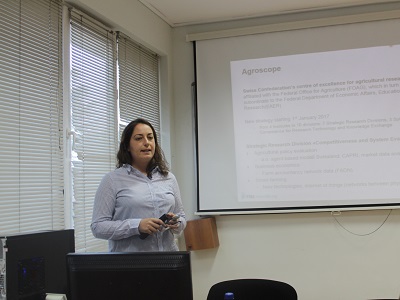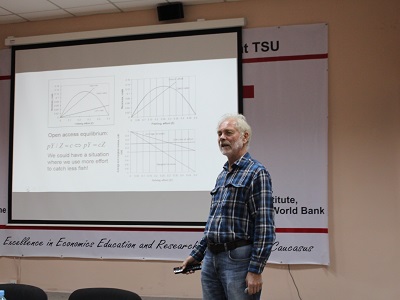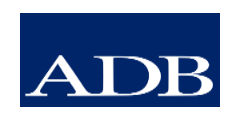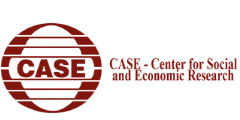On November 14, Dr. Nadja El Benni, employed at the Research Institute of Organic Agriculture (FiBL) until October 2016 and starting at Agroscope (Swiss Confederation’s centre of excellence for agricultural research) in January 2017 as head of the Strategic Research Division “Competitiveness and System Evaluation”, visited ISET. She delivered a presentation entitled “Perception of food quality and authenticity of Chinese consumers”. The melamine scandal of 2008 and a series of related scandals in the years thereafter has led to low levels of trust in the safety and integrity of domestically produced Chinese infant milk formula; concerned parents in China are increasingly using ‘foreign-produced’ brands.
On November 7, ISET hosted Professor Rögnvaldur Hannesson of the Norwegian School of Economics, who gave a presentation entitled ‘Tradable Fish Quotas and Return on Capital in Norwegian Fisheries’.
Dr. Hannesson started by defining a key problem facing the Norwegian fishing industry. Water basins are generally considered to be common property, as well as the fish inside them, and so fishermen consider water basins as an unlimited resource for their profit. However, this problem usually leads to a situation wherein fishermen use more effort to catch a fish than the revenue returns their work brings. Dr. Hannesson explained that there are two ways to solve the problem: the introduction of taxation or quotas. Dr. Hannesson used data from the Norwegian fishing industry to check whether the introduction of quotas does indeed help to solve the problem of overfishing and to increase return on capital in this industry.
Shakespeare is often quoted as having said that death and tax are the only two certainties in life; many people of the modern world would perhaps agree that he would have been at liberty to add tax evasion to the list.
“Tax Evasion with Endogenous Reference Points” was the title of a seminar held by Teimuraz Gogsadze, a PhD candidate of the University of Leicester and an ISET graduate of the Class of 2011. Gogsadze examined how taxpayers make tax compliance decisions and respond to changes in tax policies, such as the tax rate, the penalty rate and the probability of an audit.
Gogsadze overviewed tax evasion behaviour and discussed the inability of mainstream decision theories in economics - namey expected utility theory - to explain the evidence. For instance, it was stressed that people are found to evade tax more when the tax rate increases, while expected utility theory predicts a reverse tax rate-compliance relation. Gogsadze discussed the possible explanations of the theory’s failure, arguing that an individual might not only enjoy the final level of wealth but she/he might also care about the deviations from her/his reference wealth level; the latter being supported by the evidence that falling below the reference point induces a sensation of losses that bites more than the equivalent gains are enjoyed, a feature known as the loss aversion.













